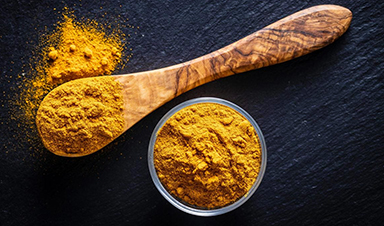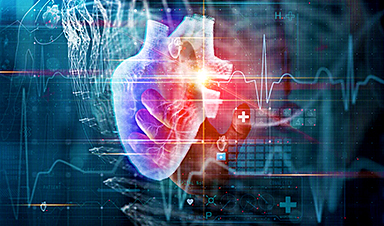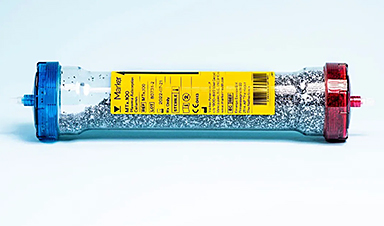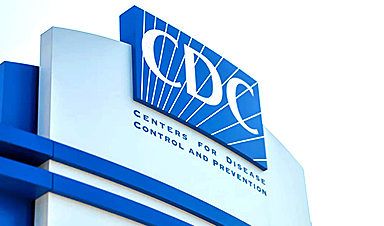Texas A&M researchers have found that curcumin, when activated by light, can weaken antibiotic-resistant bacteria, restoring the effectiveness of conventional antibiotics.
Curcumin: A Surprising Ally Against Superbugs
In 2017, a woman admitted to a Nevada hospital with pneumonia died from multiple organ failure and sepsis. The cause? A strain of bacteria resistant to 26 different antibiotics. These antibiotic-resistant bacteria, known as superbugs, pose a serious and growing global health threat.
In the fight against these dangerous pathogens, researchers at Texas A&M have discovered a potential new tool—curcumin, the natural compound that gives turmeric its bright yellow color.
Their study found that when bacteria consume curcumin and are then exposed to light, harmful reactions occur within the microbes, ultimately killing them. This approach reduces the number of antibiotic-resistant strains and restores the effectiveness of conventional antibiotics.
The findings were published in Scientific Reports.
The Antibiotic Crisis and the Rise of Superbugs
Before antibiotics, infectious diseases were the leading cause of death and disability around the world. With the advent of these life-saving medications, the human lifespan has increased by 23 years on average. In the last several decades, while the discovery of novel antibiotics has plateaued, antibiotic-resistant bacteria have simultaneously become more common, ushering in the era of superbugs, such as methicillin-resistant Staphylococcus aureus (MRSA), vancomycin-resistant enterococcus, and pneumonia, which are all extremely hard to treat. In fact, infectious diseases are projected to be the main causes of human mortality once again, claiming up to 10 million lives annually.
A New Strategy to Overcome Antibiotic Failure
“When bacteria start becoming resistant to conventional antibiotics, we have what we call an antibiotic catastrophe,” said Dr. Vanderlei Bagnato, professor in the Department of Biomedical Engineering and senior author on the study. “To overcome this challenge, we need alternative ways to either kill the superbugs or find a novel way to modify natural processes within the bacteria so that antibiotics start to act again.”
Bacteria display natural variation within a given population. This heterogeneity introduces variations in cell behaviors, including response to antibiotics, which can directly contribute to treatment resistance if some strains survive antimicrobial medication and continue replicating. Thus, the researchers wanted to curb bacterial heterogeneity to control bacterial resistance.
Harnessing Light to Kill Drug-Resistant Bacteria
Photodynamic inactivation, a technique that has shown promise in combating bacterial resistance, uses light and light-sensitive molecules, called photosensitizers, to produce reactive oxygen species that can kill microorganisms by disrupting their metabolic processes. In their experiments, the team used curcumin, which is also a natural food for bacteria. They tested this technique on strains of Staphylococcus aureus that are resistant to amoxicillin, erythromycin, and gentamicin.
A Game-Changer for Antibiotic Effectiveness
The researchers exposed the bacteria to many cycles of light exposure and then compared the minimum concentration of antibiotics needed to kill the bacteria after light exposure versus those that did not get light exposure.
“When we have a mixed population of bacteria where some are resistant, we can use photodynamic inactivation to narrow the bacterial distribution, leaving behind strains that are more or less similar in their response to antibiotics,” said Bagnato. “It’s much easier now to predict the precise antibiotic dose needed to remove the infection.”
Expanding the Potential of Curcumin Therapy
The team noted that photodynamic inactivation using curcumin has tremendous potential as an adjuvant or additional therapy with antibiotics for diseases, like pneumonia, caused by antibiotic-resistant bacteria.
“Photodynamic inactivation offers a cost-effective treatment option, which is crucial for reducing medical expenses not only in developing countries but also in the United States,” said Dr. Vladislav Yakovlev, professor in the Department of Biomedical Engineering and author on the study. “It also has potential applications in military medicine, where this technology could be used to treat battlefield wounds and prevent the development and spread of antimicrobial resistance, a significant concern in combat situations.”
Reference: “Photodynamic inactivation and its effects on the heterogeneity of bacterial resistance” by Jennifer M. Soares, Vladislav V. Yakovlev, Kate C. Blanco and Vanderlei S. Bagnato, 16 November 2024, Scientific Reports.
DOI: 10.1038/s41598-024-79743-y
Contributors to the research include Dr. Jennifer Soares, who is the primary author on the paper, and Dr. Kate Blanco from the Institute of Physics of São Carlos, University of São Paulo, Brazil.
This research was financially supported by the São Paulo Research Foundation, the National Council for Scientific and Technological Development, the Cancer Prevention and Research Institute of Texas, the Governor’s University Research Initiative, the Air Force Office of Scientific Research, and the National Institutes of Health.
News
Measles Is Back: Doctors Warn of Dangerous Surge Across the U.S.
Parents are encouraged to contact their pediatrician if their child has been exposed to measles or is showing symptoms. Pediatric infectious disease experts are emphasizing the critical importance of measles vaccination, as the highly [...]
AI at the Speed of Light: How Silicon Photonics Are Reinventing Hardware
A cutting-edge AI acceleration platform powered by light rather than electricity could revolutionize how AI is trained and deployed. Using photonic integrated circuits made from advanced III-V semiconductors, researchers have developed a system that vastly [...]
A Grain of Brain, 523 Million Synapses, Most Complicated Neuroscience Experiment Ever Attempted
A team of over 150 scientists has achieved what once seemed impossible: a complete wiring and activity map of a tiny section of a mammalian brain. This feat, part of the MICrONS Project, rivals [...]
The Secret “Radar” Bacteria Use To Outsmart Their Enemies
A chemical radar allows bacteria to sense and eliminate predators. Investigating how microorganisms communicate deepens our understanding of the complex ecological interactions that shape our environment is an area of key focus for the [...]
Psychologists explore ethical issues associated with human-AI relationships
It's becoming increasingly commonplace for people to develop intimate, long-term relationships with artificial intelligence (AI) technologies. At their extreme, people have "married" their AI companions in non-legally binding ceremonies, and at least two people [...]
When You Lose Weight, Where Does It Actually Go?
Most health professionals lack a clear understanding of how body fat is lost, often subscribing to misconceptions like fat converting to energy or muscle. The truth is, fat is actually broken down into carbon [...]
How Everyday Plastics Quietly Turn Into DNA-Damaging Nanoparticles
The same unique structure that makes plastic so versatile also makes it susceptible to breaking down into harmful micro- and nanoscale particles. The world is saturated with trillions of microscopic and nanoscopic plastic particles, some smaller [...]
AI Outperforms Physicians in Real-World Urgent Care Decisions, Study Finds
The study, conducted at the virtual urgent care clinic Cedars-Sinai Connect in LA, compared recommendations given in about 500 visits of adult patients with relatively common symptoms – respiratory, urinary, eye, vaginal and dental. [...]
Challenging the Big Bang: A Multi-Singularity Origin for the Universe
In a study published in the journal Classical and Quantum Gravity, Dr. Richard Lieu, a physics professor at The University of Alabama in Huntsville (UAH), which is a part of The University of Alabama System, suggests that [...]
New drug restores vision by regenerating retinal nerves
Vision is one of the most crucial human senses, yet over 300 million people worldwide are at risk of vision loss due to various retinal diseases. While recent advancements in retinal disease treatments have [...]
Shingles vaccine cuts dementia risk by 20%, new study shows
A shingles shot may do more than prevent rash — it could help shield the aging brain from dementia, according to a landmark study using real-world data from the UK. A routine vaccine could [...]
AI Predicts Sudden Cardiac Arrest Days Before It Strikes
AI can now predict deadly heart arrhythmias up to two weeks in advance, potentially transforming cardiac care. Artificial intelligence could play a key role in preventing many cases of sudden cardiac death, according to [...]
NanoApps Medical is a Top 20 Feedspot Nanotech Blog
There is an ocean of Nanotechnology news published every day. Feedspot saves us a lot of time and we recommend it. We have been using it since 2018. Feedspot is a freemium online RSS [...]
This Startup Says It Can Clean Your Blood of Microplastics
This is a non-exhaustive list of places microplastics have been found: Mount Everest, the Mariana Trench, Antarctic snow, clouds, plankton, turtles, whales, cattle, birds, tap water, beer, salt, human placentas, semen, breast milk, feces, testicles, [...]
New Blood Test Detects Alzheimer’s and Tracks Its Progression With 92% Accuracy
The new test could help identify which patients are most likely to benefit from new Alzheimer’s drugs. A newly developed blood test for Alzheimer’s disease not only helps confirm the presence of the condition but also [...]
The CDC buried a measles forecast that stressed the need for vaccinations
This story was originally published on ProPublica, a nonprofit newsroom that investigates abuses of power. Sign up to receive our biggest stories as soon as they’re published. ProPublica — Leaders at the Centers for Disease Control and Prevention [...]





















